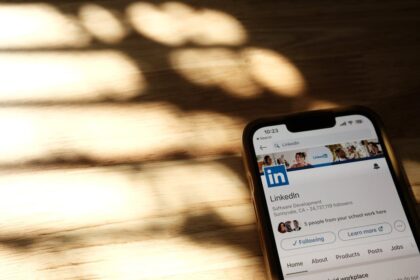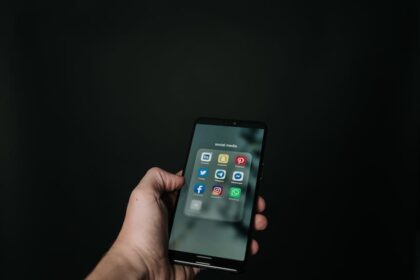Boosting engagement on LinkedIn Ads is not merely about achieving higher click-through rates (CTR) or accumulating likes; it is a strategic imperative that directly impacts campaign performance, cost-efficiency, and overall return on investment (ROI). Engagement, in the context of LinkedIn advertising, encompasses a spectrum of user interactions, from passive consumption like video views to active participation such as comments, shares, clicks, and lead form submissions. Each of these interactions signals varying degrees of interest and intent, providing invaluable data points for optimization and demonstrating the ad’s relevance to its target audience. Understanding and actively cultivating these interactions is paramount for any marketer seeking to maximize their presence on the professional networking platform.
The Essence of Engagement in LinkedIn Advertising
Defining engagement metrics on LinkedIn extends beyond simple vanity metrics, delving into indicators of true audience resonance. Clicks, particularly the click-through rate (CTR), remain a primary metric, signifying that the ad creative and copy were compelling enough to prompt a user to learn more. Beyond clicks, direct social interactions like likes, comments, and shares are potent indicators of brand affinity and content value. Comments demonstrate active thought and an inclination to engage in dialogue, while shares amplify the ad’s reach organically to the sharer’s network, effectively turning an audience member into an unpaid brand advocate. For video ads, video views and completion rates offer insights into how engaging the visual narrative truly is. A high completion rate suggests the content held the viewer’s attention throughout. For specific ad formats like follower ads, new follows represent a direct conversion towards building an owned audience. Finally, for conversion-focused campaigns, leads generated through LinkedIn Lead Generation Forms or website visits culminating in conversions are the ultimate form of high-intent engagement, signifying a direct business outcome.
Why engagement matters extends far beyond these individual metrics. LinkedIn’s ad algorithm, like those of other major platforms, prioritizes ads that generate higher engagement. This is due to an internal “Ad Relevance Score” or similar mechanisms, where highly engaging ads are perceived as more valuable to the user experience, leading the platform to show them more frequently and often at a lower cost per impression or click. This algorithmic favoritism translates directly into cost efficiency, allowing advertisers to achieve greater reach and more interactions for the same budget. Furthermore, genuine engagement fosters brand affinity and trust. When users actively interact with an ad, comment on it, or share it, it creates a more authentic connection than a mere impression. This interaction also leads to amplification and virality; a shared ad expands its reach exponentially, leveraging the trust networks of individual users. Lastly, detailed engagement metrics provide deeper audience insights, allowing marketers to understand which messages, visuals, and offers resonate most with specific segments, informing future campaigns and broader marketing strategies.
Foundational Pillars: Targeting for Relevance
Precision audience targeting is the bedrock upon which all successful LinkedIn ad campaigns are built. Without reaching the right people, even the most compelling ad creative will fail to generate meaningful engagement. LinkedIn’s robust targeting capabilities are its differentiating factor in the B2B landscape, allowing advertisers to pinpoint professionals with an unparalleled level of specificity. Demographic targeting, encompassing criteria such as job function, seniority, industry, and company size, enables marketers to segment audiences based on their professional profiles. Targeting by job function ensures that the ad is seen by individuals whose roles align with the product or service being offered, while seniority filters help tailor messaging to decision-makers or entry-level professionals. Industry and company size targeting are crucial for B2B solutions designed for specific sectors or organizational scales.
Beyond demographics, skills-based targeting allows advertisers to reach individuals who have explicitly listed certain proficiencies on their profiles, indicating direct relevance to specific tools, technologies, or methodologies. Interests and groups targeting enables reaching professionals who actively engage with content related to specific topics or participate in professional groups, often signifying a deeper level of engagement with their field. Education and university targeting can be valuable for recruitment, executive education programs, or products tailored to alumni networks.
However, the true power of LinkedIn’s targeting lies in Matched Audiences. These custom audience segments allow advertisers to leverage their own data for hyper-targeted campaigns. Website retargeting enables showing ads to users who have previously visited specific pages on a company’s website, signaling prior interest. Contact list uploads allow marketers to directly target individuals from their customer relationship management (CRM) systems or email lists, ideal for nurturing existing leads, cross-selling, or up-selling. Company list uploads facilitate Account-Based Marketing (ABM) strategies, enabling advertisers to target key decision-makers within specific target accounts. Finally, Lookalike Audiences leverage the data from these matched audiences to find new LinkedIn members who share similar professional attributes and behaviors, effectively scaling successful targeting strategies.
Exclusion targeting is equally critical for optimizing engagement by filtering out irrelevance. Excluding competitors prevents ad spend from being wasted on individuals unlikely to convert or who might even gain insights into your campaigns. Excluding existing customers prevents redundant messaging and allows for dedicated campaigns tailored to customer retention or expansion. Excluding irrelevant job titles or functions ensures that ads are not shown to individuals who, despite perhaps being in the right industry, do not hold roles that align with the product or service’s value proposition. The balance between audience size and specificity is a delicate art; an audience too narrow limits reach, while an audience too broad dilutes relevance and inflates costs. Finding the sweet spot ensures that ads are seen by a sufficiently large, yet highly qualified, group of professionals.
Crafting Irresistible Ad Creatives
The creative element of a LinkedIn ad—its copy, visuals, and format—is the primary driver of engagement once the audience is targeted effectively. Compelling ad copy is paramount on a platform where professionals seek valuable insights and solutions. The first line of ad copy, often referred to as the “hook,” must immediately capture attention and provide a reason to read further. It should address a pain point or promise a significant benefit. Employing a problem-solution framework within the copy helps articulate the challenge faced by the target audience and positions the advertised solution as the answer. Clarity in the value proposition is non-negotiable; users must quickly grasp what is being offered and why it matters to them.
A strong, clear, and concise Call to Action (CTA) is crucial. Phrases like “Download Now,” “Learn More,” “Register for the Webinar,” or “Get Your Free Guide” leave no ambiguity about the desired next step. Incorporating relevant emojis and thoughtful formatting (e.g., short paragraphs, bullet points) can significantly enhance readability and visual appeal, breaking up dense text. Testing different copy lengths and angles is vital; sometimes a concise message works best, while other times a more detailed narrative resonates deeper. The importance of persona-driven copy cannot be overstated; tailoring the language, tone, and specific benefits to the identified professional personas within the target audience will dramatically increase relatability and engagement.
Visuals that stop the scroll are equally vital. High-quality imagery, professional and on-brand, conveys credibility and professionalism—a non-negotiable on LinkedIn. Infographics and data visualization are particularly effective on this platform, as professionals often appreciate data-driven insights presented clearly. Maintaining brand consistency across all ad creatives reinforces brand identity and recognition. While less common than on consumer-focused platforms, user-generated content (UGC) can sometimes be leveraged if appropriate for the B2B context, adding an authentic touch. A/B testing different visuals is as important as testing copy, as even subtle changes can significantly impact engagement. Adhering to LinkedIn’s recommended aspect ratios and file sizes ensures optimal display across various devices, preventing pixelation or cropping issues that detract from professionalism.
Video is an undeniable engagement powerhouse on LinkedIn. Deciding between short-form and long-form video depends on the objective: short videos (under 30 seconds) are excellent for quick brand awareness or teasers, while longer videos (1-2 minutes) can delve deeper into product demonstrations, thought leadership, or case studies. Native video uploads are always preferred over YouTube links, as they autoplay in the feed and offer better performance tracking. Storytelling through video can create an emotional connection, even in a professional context, making complex ideas more accessible. Crucially, adding subtitles or captions to all videos is mandatory, as most LinkedIn users browse with sound off; without captions, the message is lost. The opening few seconds of a video ad must have a strong hook to prevent users from scrolling past. A clear CTA should be integrated both within the video content itself (e.g., a verbal prompt, an on-screen graphic) and as an overlay on the ad unit. Measuring video engagement metrics like completion rates and views provides deep insights into content effectiveness.
Finally, rich media formats like Document Ads and Carousel Ads offer deeper dives. Document Ads (PDFs, PPTs) are excellent for delivering gated content directly within the feed, such as whitepapers, e-books, or detailed reports, streamlining the content consumption process. Carousel Ads, which allow users to swipe through multiple images or videos, are ideal for showcasing product features, telling a sequential brand story, illustrating step-by-step guides, or highlighting different case studies. These formats enable a richer, more interactive experience than single image or video ads.
Strategic Ad Formats for Maximum Impact
LinkedIn offers a diverse array of ad formats, each tailored to specific marketing objectives and engagement types. Selecting the right format is critical for maximizing impact and ensuring the message aligns with the platform’s user experience.
Single Image Ads are the versatile workhorse of LinkedIn advertising. They are simple to create, widely supported across devices, and effective for brand awareness, website traffic, or lead generation. Their strength lies in combining a powerful visual with concise copy and a clear call to action, making them a staple for many campaigns aimed at broad engagement.
Video Ads, as previously discussed, provide a dynamic storytelling medium. They excel at conveying complex information quickly, building brand personality, and capturing attention through motion. Their primary engagement metrics revolve around views and watch time, making them ideal for brand awareness, product education, and thought leadership campaigns.
Carousel Ads, with their multi-faceted narratives, allow advertisers to present a series of images or videos that users can swipe through. This format is excellent for showcasing multiple product features, telling a chronological story, presenting different solutions for various pain points, or offering a multi-stage guide. The interactive nature inherently boosts engagement as users actively choose to explore the content.
Document Ads are uniquely suited for content distribution. By allowing users to download or view a full document (like a whitepaper, case study, or e-book) directly within the LinkedIn feed, they remove friction typically associated with driving traffic to a landing page for content downloads. This direct content delivery increases the likelihood of engagement with valuable resources.
Message Ads, also known as Sponsored InMail, offer a highly direct and personal engagement channel by delivering ads directly to a user’s LinkedIn inbox. Best practices for Message Ads include crafting compelling subject lines that encourage opening, personalizing the body copy with the recipient’s name and relevant professional details, and ensuring the message provides clear value. Frequency capping is crucial to avoid inundating users and ensure a positive experience. Integrating Lead Gen Forms directly into Message Ads allows for seamless conversion without requiring the user to leave LinkedIn.
Conversation Ads elevate the interactivity of Message Ads by offering a “choose-your-own-adventure” experience. They present multiple clickable options within the message, allowing users to navigate through different branches of content based on their interests. This branching logic and deep personalization make Conversation Ads exceptionally engaging for complex sales processes, offering customized product demos, leading users to a resource hub tailored to their needs, or pre-qualifying leads based on their choices.
Lead Generation Forms are perhaps the most direct route to high-intent engagement. When integrated with Single Image, Video, Carousel, or Message Ads, they allow users to submit their information with pre-filled fields pulled from their LinkedIn profiles, dramatically reducing friction and increasing conversion rates. Custom questions can be added to further qualify leads upfront, and seamless integration with CRM systems ensures immediate follow-up. The importance of the thank you page or message cannot be overstated; it should confirm the submission, set expectations for follow-up, and potentially offer additional resources.
Follower Ads are designed specifically to increase a company’s organic follower count on LinkedIn. By prominently featuring a “Follow” button alongside an ad, they directly encourage engagement in the form of building a loyal audience base that can be nurtured with organic content over time.
Spotlight Ads are a distinct format that appears on LinkedIn’s desktop homepage, showcasing an advertiser’s product or service with a large image and a call to action, often featuring the profile pictures of LinkedIn members who work for the advertiser’s company or share a connection. These are excellent for driving website traffic or promoting a specific product or service with high visual impact.
Each ad format has its unique strengths and optimal use cases for boosting specific types of engagement. A well-rounded LinkedIn Ads strategy often involves leveraging a combination of these formats to achieve diverse objectives, from brand awareness and community building to direct lead generation and conversions.
Optimizing Bidding and Budget for Engagement
Bidding and budget allocation are critical levers that directly influence ad visibility, reach, and ultimately, engagement on LinkedIn. Understanding LinkedIn’s bidding options is foundational. The Automated Bid strategy offers simplicity, allowing LinkedIn’s algorithms to optimize bids for the chosen objective (e.g., maximum clicks, maximum leads) within the set budget. This is often a good starting point for new campaigns or those with less hands-on management. Manual Bidding, specifically “Target Cost” bidding, provides advertisers with greater control, allowing them to specify a target cost per click (CPC) or cost per lead (CPL). This offers precision for campaigns with specific efficiency goals. Max Delivery is another automated option that prioritizes getting the most impressions for your budget, often used for brand awareness campaigns where broad reach is the primary objective.
Specific bid types align with different engagement goals. Cost-Per-Click (CPC) bidding is ideal when the objective is to drive website visits or encourage clicks to content, where engagement is measured by users actively interacting with the ad to navigate elsewhere. Cost-Per-Impression (CPM) bidding is suited for brand awareness campaigns where the goal is maximum visibility rather than immediate interaction, and engagement is measured more by impressions and reach. Cost-Per-Lead (CPL) bidding is designed for Lead Generation Form campaigns, optimizing bids to acquire the most leads within budget, with engagement here being the direct submission of information. Cost-Per-Send (CPS) is specific to Message Ads, where the advertiser pays for each message delivered.
Budget allocation strategies are equally vital. Advertisers can choose between a daily budget, which caps spending per day, or a lifetime budget, which sets a total spend limit for the entire campaign duration. Starting with smaller budgets for testing allows marketers to gather performance data without significant financial risk, iteratively optimizing before scaling. Once winning ad creatives, audiences, and bid strategies are identified, scaling budgets based on performance allows for accelerated growth in engagement and conversions. Understanding the impact of budget on reach and frequency is also key; insufficient budget can limit visibility, while excessive budget can lead to ad fatigue if frequency becomes too high within a small audience.
The bid-engagement connection is symbiotic. LinkedIn’s ad relevance score directly influences how often and at what cost an ad is shown. Ads with higher engagement (higher CTR, more likes, comments, shares) are perceived as more relevant and valuable by LinkedIn, often leading to lower CPCs and CPMS. This means that a focus on creating engaging creatives and highly relevant targeting can indirectly lead to more efficient bidding. Conversely, aggressive bidding can sometimes buy more visibility, but without strong engagement, it can result in wasted spend. The goal is not always the absolute lowest cost, but optimizing for engagement that leads to qualified leads or conversions at an efficient cost. This requires a nuanced approach, balancing bid strategy with creative quality and audience relevance.
Continuous Optimization and A/B Testing
Continuous optimization and A/B testing are indispensable practices for boosting engagement on LinkedIn Ads. The digital advertising landscape is dynamic, and what works today might not work tomorrow. A structured A/B testing methodology is crucial for systematically identifying elements that drive higher engagement. This involves isolating variables: testing different versions of ad copy, visuals, calls to action, or even small tweaks to audience segments. The goal is to change only one variable at a time to accurately attribute performance changes. Statistical significance and ensuring an adequate sample size are critical to drawing reliable conclusions; premature conclusions based on insufficient data can lead to suboptimal decisions. Interpreting results goes beyond simply identifying the “winner”; it involves understanding why one variation performed better and using those insights to iterate on future campaigns.
Key metrics for optimization serve as the compass for performance. Click-Through Rate (CTR) remains a primary engagement indicator, demonstrating the ad’s initial appeal. Conversion Rate (CR) measures the percentage of clicks that lead to a desired action (e.g., a lead form submission, a download), reflecting higher-intent engagement. Cost Per Click (CPC) and Cost Per Lead (CPL) are crucial efficiency metrics, indicating the cost of acquiring a specific engagement type. The overall engagement rate (likes, comments, shares per impression) provides a broader view of audience interaction. Video View Rate (VVR) and video completion rates offer insights into video content effectiveness. Analyzing frequency and reach helps determine if an audience is becoming fatigued by seeing the same ad too often.
Campaign performance monitoring and adjustments should be a daily or weekly ritual. This involves regularly checking campaign performance within LinkedIn Campaign Manager. Identifying and pausing underperforming ads or audience segments prevents wasted spend. Conversely, duplicating and scaling winning ad creatives or audience combinations allows for maximum leverage of successful elements. Ad fatigue is a common issue where an audience has seen an ad too many times, leading to diminishing returns and reduced engagement. Recognizing the signs of ad fatigue (e.g., declining CTR, increasing CPC with stable bids) and mitigating it by refreshing creatives or expanding audiences is essential.
Leveraging LinkedIn Analytics and Campaign Manager insights provides the data necessary for informed optimization. Demographics reporting allows advertisers to see which job functions, industries, or seniority levels are engaging most with their ads, refining future targeting. Performance charts and data exports facilitate deeper analysis in external tools. Understanding the “waterfall chart” in Campaign Manager helps visualize the conversion funnel, identifying drop-off points from impressions to clicks to conversions. The value of benchmarking, by comparing your campaign performance against industry averages or your own historical data, helps set realistic goals and identify areas for improvement.
Post-Click Experience: Sustaining Engagement
Boosting engagement on LinkedIn Ads extends beyond the click; the post-click experience is equally vital for converting initial interest into meaningful outcomes. Landing page optimization is paramount, as a disconnect between the ad creative and the landing page can lead to high bounce rates and wasted ad spend. The landing page must be highly relevant to the ad’s creative and offer, maintaining message match to ensure a seamless user experience. Clarity in the value proposition on the landing page is crucial, reinforcing why the user is there and what they stand to gain.
Mobile responsiveness is non-negotiable, given that a significant portion of LinkedIn users access the platform on mobile devices. A slow-loading or poorly formatted mobile landing page will immediately deter engagement. Fast load times are critical; even a few seconds delay can drastically increase bounce rates. The landing page should have simple navigation and a clear, prominent Call to Action that guides the user towards the desired conversion. Incorporating trust signals, such as testimonials, client logos, security badges, or industry certifications, helps build credibility and encourages completion of the desired action.
Nurturing leads post-engagement is essential for maximizing the ROI of LinkedIn ad spend. Initial engagement through an ad often signifies interest but not immediate purchase intent. Email sequences can be initiated to provide further value, answer common questions, and guide the lead through the sales funnel. Retargeting campaigns, both on LinkedIn and other channels (e.g., Google Display Network, Facebook), can be deployed to re-engage users who showed interest but did not convert, reminding them of the offer or presenting a different, complementary one. Integrating the engaged audience into a broader content marketing funnel, providing educational content and thought leadership, helps build trust and nurture them towards conversion over time. The importance of timely follow-up for sales or conversions cannot be overstated; prompt outreach after a lead form submission or a high-intent website visit significantly increases the likelihood of converting that engagement into a business outcome. A well-orchestrated post-click strategy ensures that initial ad engagement is capitalized upon and transformed into tangible business value.
Advanced Strategies for Deepening Engagement
To truly deepen engagement on LinkedIn Ads, marketers must move beyond basic campaign setup and embrace more advanced strategies that leverage the platform’s nuances and integrate with broader marketing efforts. Leveraging LinkedIn’s algorithm for organic boost is a powerful, yet often overlooked, strategy. Ads that generate high engagement metrics (likes, comments, shares) are often perceived by LinkedIn’s algorithm as valuable content, leading to a higher “Ad Relevance Score.” This can result in increased organic visibility for the associated company page and even lower ad costs due to favorable algorithmic treatment. Actively prompting comments and shares within ad copy, or creating content that naturally encourages discussion, can significantly boost this organic amplification. Responding to comments on ads promptly and thoughtfully further fuels engagement and signals to LinkedIn that the content is fostering community, potentially increasing its reach.
Integrating organic content strategy with paid ads creates a synergistic effect. Amplifying top-performing organic posts with paid promotion is a cost-effective way to extend their reach and engagement to a targeted audience beyond your immediate followers. Conversely, re-purposing successful ad creatives into organic posts (e.g., sharing a high-performing video ad on your company page) can extend its lifecycle and provide valuable content for your organic audience. This blend helps in building a cohesive brand narrative and fostering community around both paid and organic content.
Dynamic Ads and personalization at scale offer opportunities for hyper-relevant engagement. LinkedIn’s Dynamic Ads can dynamically tailor content based on a user’s profile attributes (e.g., job title, company name), creating an incredibly personalized ad experience. Leveraging other data points (from Matched Audiences or CRM integrations) can enable even deeper personalization, making each ad feel bespoke to the individual recipient, thus significantly increasing relevance and engagement.
Understanding ad scheduling and dayparting allows for more efficient budget allocation. By analyzing when your target audience is most active on LinkedIn (e.g., during specific business hours, mid-week), you can schedule ads to run only during these peak engagement windows. Testing different time slots can reveal optimal periods for your specific audience, preventing wasted impressions during off-peak hours.
Finally, utilizing UTM parameters for granular tracking is crucial for understanding the true source of engagement and conversions. By appending specific parameters (source, medium, campaign, content, term) to your ad URLs, you can track precisely which LinkedIn campaigns, ad sets, and even individual creatives are driving traffic and conversions when integrated with web analytics tools like Google Analytics or your CRM. This granular data allows for highly informed optimization decisions, ensuring that every engagement metric can be tied back to its specific origin, closing the loop on performance analysis. These advanced strategies collectively contribute to a more sophisticated and effective approach to boosting engagement on LinkedIn Ads, moving beyond superficial metrics to drive deeper, more meaningful interactions and measurable business outcomes.
Troubleshooting Common Engagement Issues
Even with the best strategies, LinkedIn ad campaigns can sometimes underperform. Effective troubleshooting requires systematically diagnosing the root causes of low engagement and implementing targeted solutions.
Low CTR (Click-Through Rate) is a common indicator of an ad failing to capture attention. The primary culprits often include an irrelevant audience, meaning the ad is being shown to people who have no interest in the offer. The solution here is to refine targeting parameters, using more specific job functions, industries, or Matched Audiences. Weak ad copy or visuals are another major factor; the message might not be compelling, the value proposition unclear, or the visual unappealing. This requires A/B testing different headlines, body copy variations, and diverse imagery or video formats. An unclear CTA (Call to Action) can also lead to low CTR; if users don’t know what to do next, they won’t click. Ensure CTAs are prominent, concise, and action-oriented. Finally, ad fatigue can set in if the audience has seen the ad too many times. Refreshing creatives or expanding the audience pool can mitigate this.
High Cost Per Engagement (CPE), whether CPC or CPL, signifies inefficiency. This can be due to an overly small audience, which limits competition and drives up prices, or a highly competitive niche where many advertisers are vying for the same eyeballs. In these cases, broadening the audience slightly (without sacrificing relevance) or exploring niche targeting options can help. Suboptimal bidding strategy also contributes to high costs. If using automated bidding, ensure the campaign objective aligns with your engagement goal. If manual bidding, consider adjusting bid amounts based on historical performance or experimenting with different bid types (e.g., optimizing for clicks vs. leads).
Lack of comments or shares indicates that the content isn’t inspiring interaction or organic amplification. To encourage interaction, explicitly ask questions in the ad copy that prompt discussion. Create content that sparks debate or provides a unique perspective that users feel compelled to share or comment on. For certain formats, like event ads, running polls can directly engage the audience. For other content, focusing on thought leadership that resonates with professional challenges often inspires commentary.
Poor video completion rates suggest that viewers are losing interest quickly. The solution lies in improving watchability. A strong opening hook in the first 3-5 seconds is crucial to grab attention. Keeping the video concise and to the point ensures viewers get the message before dropping off. Adding captions is non-negotiable, as most LinkedIn videos are watched with sound off. Most importantly, ensure the video delivers value early and continuously, making every second count.
Misalignment between the ad and the landing page is a critical failure point. If a user clicks on an ad expecting one thing and finds something entirely different on the landing page, they will bounce immediately, wasting the click. The solution is to close the gap: ensure the landing page design, messaging, and offer directly mirror what was promised in the ad. Use consistent headlines, visuals, and calls to action across both the ad and the landing page. This continuity ensures a smooth user journey and maximizes the chances of converting initial engagement into desired actions. Addressing these common issues systematically is key to unlocking and sustaining higher engagement rates on LinkedIn Ads.
Future Trends and Sustaining Long-Term Engagement
The landscape of digital advertising is constantly evolving, and LinkedIn Ads are no exception. Staying ahead of future trends is essential for sustaining long-term engagement and maximizing ROI. The rise of Artificial Intelligence (AI) in ad optimization is a significant trend. AI-driven bid optimization is becoming increasingly sophisticated, allowing platforms to automatically adjust bids in real-time to achieve campaign goals more efficiently than manual methods. AI is also making inroads into creative testing and generation, with tools that can predict ad performance, generate variations, or even personalize ad content at scale based on user data. Embracing these AI capabilities can lead to more efficient and highly engaging campaigns.
Interactive content formats are gaining prominence as advertisers seek to differentiate and provide richer experiences. While LinkedIn already offers Conversation Ads, we can expect to see further evolution towards more engaging formats like native polls, quizzes, and interactive videos that allow users to make choices within the content, guiding their own narrative. These formats inherently drive higher engagement by transforming passive viewing into active participation.
Personalization at scale will continue to be a cornerstone of effective advertising. Beyond basic name and company personalization, future trends will lean towards dynamically tailoring content, offers, and even entire ad sequences based on a user’s real-time professional context, past interactions, and inferred needs. This hyper-personalization makes ads feel less like advertisements and more like relevant, valuable communications.
Community building via ads is an emerging focus. While ads typically drive clicks or leads, savvy marketers will increasingly leverage ad campaigns to foster genuine professional communities around their brand. This might involve running discussion-oriented ads, promoting LinkedIn Groups, or creating content that sparks ongoing dialogue, cultivating a loyal base of engaged followers who become brand advocates.
Ethical considerations and transparency are becoming increasingly important. As data privacy concerns grow, advertisers will need to be more transparent about data usage and ensure their ad practices are ethical and compliant with regulations. Building trust with the audience by being transparent and delivering genuine value will be crucial for sustained engagement.
Finally, continuous learning and adapting to platform changes is perhaps the most critical trend for long-term success. LinkedIn, like all major ad platforms, frequently updates its features, algorithms, and policies. Marketers must commit to ongoing education, regularly reviewing LinkedIn’s official resources, participating in industry discussions, and experimenting with new features as they roll out. This adaptability ensures that campaigns remain optimized, compliant, and continue to leverage the most effective tools for boosting engagement in an ever-evolving digital environment. Embracing these trends and maintaining a proactive approach to learning will be key to long-term success on LinkedIn Ads.











